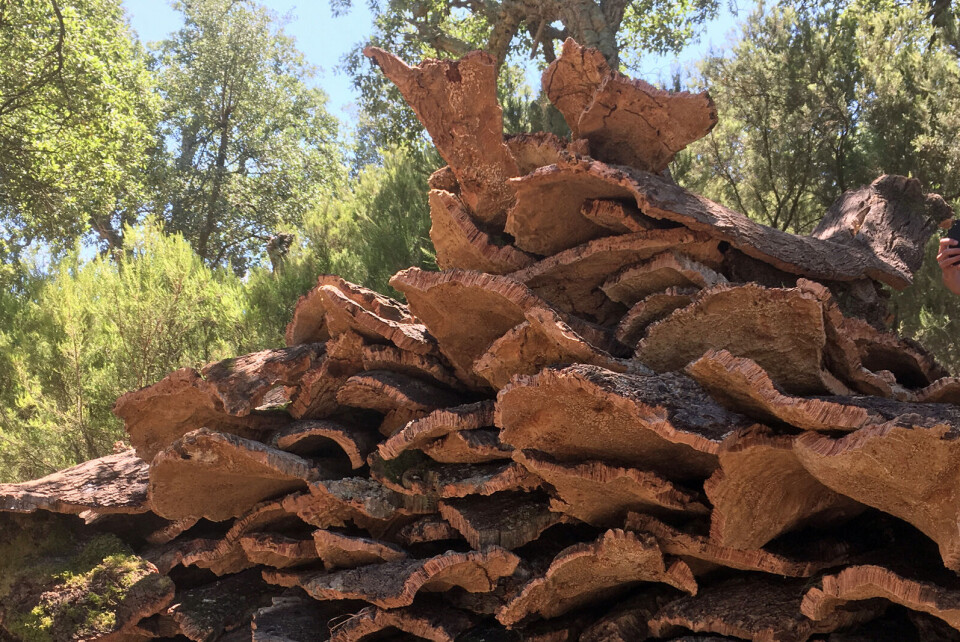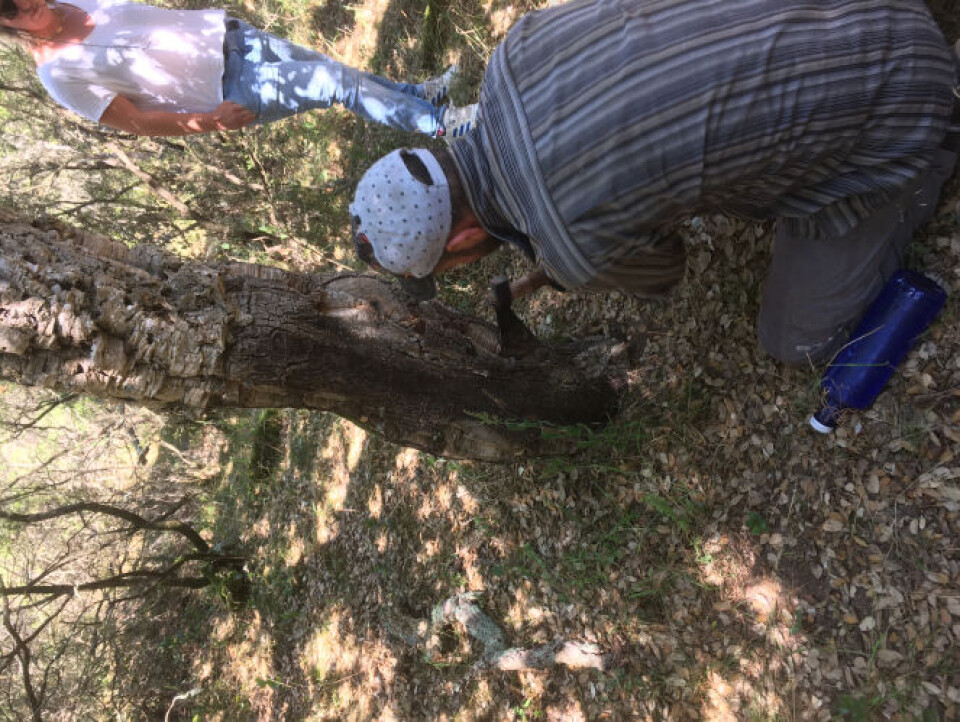-
This self-service wine vending machine has been approved for French roadsides
Innovative machines offer convenient wine access while adhering to alcohol laws
-
Understand the basics of French wine labelling
Why are French wines labelled as Bordeaux or Burgundies, and not Cabernet or Malbec? Jonathan Hesford explains
-
Know your cheeses and their seasons: which to eat in France in February
Cow’s milk cheeses dominate as winter comes to an end
From tree to bottle: How wine cork production works in France
A local association in southern France is offering a cork harvesting service on suitable forests in Roussillon

Wine and cork have a long shared history. I buy my corks from a local producer, DIAM, who invited us to come and see how cork is harvested. Cork is the bark of the cork oak tree, Quercus suber. These trees are native to the western Mediterranean and have been cultivated for centuries. The main producers of cork are Portugal, Spain and Morocco. In those countries, cork oaks are often planted in carefully tended plantations.
Here in Southern France, the trees were planted in forests on rugged hillsides. Because of relatively high labour costs and the accessibility, the forests in the Roussillon were pretty much abandoned and the cork forests are now home to many other trees and shrubs, including other types of oak.
However, a local association is offering a harvesting service to provide some income from the cork as well as advising the landowners on how to manage their forests. They organise the harvest team, collect the cork, sell it and compensate the owners by weight and quality.
It was this association that showed us the work they do, deep in the forested hills of the Pyrénées-Orientales within sight of the Spanish border.
Although related to the more well-known oak trees, cork oaks do not have the typical oak leaf shape. They are oval, smooth and leathery. The trunk, on which the precious bark grows, is only about 2-3 metres high. The cork bark forms early on in the tree’s life, creating a layer about 3-5cm thick. The spongy bark protects the tree trunk from forest fires, allowing it to survive and regrow its branches.
A cork oak takes about 40 years to start producing decent quality cork. The first growth of the bark is of poor quality because it lacks elasticity and consistency. It is known as the “male” and only suitable for basic cork products. Once the male cork has been removed, when the tree is between 10 and 20 years old, a new layer of bark forms over a span of about 8-12 years. This is known as “female” cork.
The first harvest of female cork is still not of high enough quality for wine corks and is used for floor-tiles and other decorative and insulating materials, notably in satellites.
The bark is removed from the tree by hand using special axes, which have a wedged wooden handle to prise the bark gently from the tree. In dense forests such as the ones in the Roussillon, the harvesters clear narrow tracks to enable them to carry the sheets of cork down to the roadside by hand.

The workers need to be highly skilled to remove the cork in large, unbroken sections and avoid damaging the trunk of the tree. They say it takes three years for a harvester to become fully proficient with the axe. The first years are spent just carrying the cork and learning from the more experienced workers.
When the bark is removed, the trunk of the tree is orange in colour and moist but soon becomes black as the new layer of bark starts to grow. When driving through the cork forests, you will see many trees with smooth black trunks.
The cork used for wine bottles is of the highest quality, usually coming from the 3rd and 4th harvests of female cork. The cork bark is dried and cut into strips of 44mm, the length of a cork.
The corks are then cut from these strips using precision machines. There is therefore a lot of waste from the cutting process. But this can be used as granules to make conglomerate corks, insulting materials or ground down to make a paste filler for lower quality corks.
Cork quality is determined by the number of lenticels (small holes) and splits in the cork, the fewer the better. The most expensive wine corks can cost around €3 each and even the cheapest natural cork is around 25 cents.
Low quality corks with many lenticels can be filled with a paste of cork dust to make them look better from the outside but it doesn’t improve their elasticity, strength or longevity.
The corks that I buy from DIAM are made from cork granules but cut from strips of quality cork, not the waste. I’ve used high quality natural corks in the past but there is always a risk of a bottle becoming “corked”. The cork taint that ruins a wine, making it smell and taste of mouldy paper, is mainly caused by a molecule called 2,4,6-Trichloroanisole (TCA). It is created by fungi, which can be present inside corks, coming into contact with chlorophenols.
Chlorophenols are present in many pesticides, some of which have been used in cork oak plantations, meaning that some corks arrive at the winery already containing TCA.
Chlorophenols can also be produced in the winery if chlorine-based cleaners are used to clean tanks and especially barrels and wooden tanks. Phenols occur naturally in grapes and wine, whether or not pesticides are used in the vineyard. So the use of chlorine in a winery is always a risk, especially if natural corks are used to seal the bottles.
DIAM use a process to remove the TCA and other substances likely to cause taint from the cork. Carbon dioxide gas is forced at high pressure into an autoclave containing the cork granules. This removes the suspect molecules from the cork and these purified granules are reformed into closures for wine bottles.
A few years ago I toured the DIAM factory to learn about the whole process but it was even more interesting to see where the cork comes from and how much work is involved in harvesting it.
Cork forests provide a rich, natural environment for many other plants and wildlife so preserving them for the production of wine closures is important.
The same cannot be said for aluminium screwcaps or plastic closures, which deplete resources and produce non-degradable waste.
Jonathan Hesford is the owner, vigneron and winemaker of Domaine Treloar in the Roussillon.
Related stories
Bordeaux wines expert to launch online English-language guide
Too soon to assess impact of forest fire on French rosé harvest
What makes the perfect French wine fair?
























